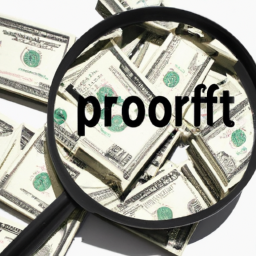Have you ever thought about running a blog professionally? Maybe you’ve dabbled in blogging as a hobby and are now considering taking it to the next level. Well, today I’m going to give you the lowdown on what it takes to run a blog like a pro. Trust me, there’s a lot more to it than just writing a few posts and hitting publish.
First things first, let’s talk about the essentials you’ll need to invest in. When it comes to blogging hardware, having a decent laptop is a must. You’ll also want to consider getting a good webcam, microphone, and DSLR camera with lenses for capturing quality visuals. Next, let’s not forget about blog hosting. There are plenty of options out there, but a highly recommended provider is Bluehost, which can cost anywhere from $2 to $20 per month.
Another cost to consider is the domain for your blog. While the average cost of a .com domain is around $14 per year, it’s important to choose a memorable and unique domain name that reflects your brand. And of course, we can’t forget about blog design. The cost of designing your blog will depend on factors like customization, but be prepared to spend anywhere from $30 to $2,500 or more.
Now, let’s move on to content writing. You have the option to write all the content yourself, which can be time-consuming, or you can outsource it to freelance copywriters. The cost of content writing can vary, with freelancers charging anywhere from $15 to $50 per hour. Lastly, if you want to boost your blog’s visibility, advertising costs can be incurred through platforms like Google AdWords. This allows you to have control over pricing and campaign duration, making it a great investment for reaching a wider audience.
In this article, we’ll dive deeper into each of these essential costs and explore the best practices for running a blog professionally. So, if you’re serious about taking your blog to the next level, stay tuned and get ready to learn. Trust me, with the right tools and knowledge, you’ll be well on your way to success in the world of professional blogging.
Running a blog professionally: The essentials you need to know
Running a blog professionally requires certain costs, but it can be a rewarding and profitable endeavor. In this article, I will discuss the key elements needed for success and the various costs associated with running a blog professionally.
The advantages of running a blog professionally
Running a blog professionally comes with several advantages. Firstly, it allows you to establish yourself as an expert in your niche and build a credible online presence. It also provides a platform for you to share your knowledge, ideas, and opinions with a wider audience. Moreover, running a blog professionally can generate income through various monetization strategies, such as sponsored posts, affiliate marketing, and selling digital products.
Key elements for success
To run a blog professionally, certain key elements must be in place. These include high-quality content, a visually appealing design, effective SEO strategies, and consistent traffic generation. Additionally, engaging with your audience and building a loyal community is vital. By focusing on these key elements, you can create a successful and sustainable blog.
Determining costs
Running a blog professionally incurs various costs, which can range from hardware expenses to marketing and advertising fees. By understanding and budgeting for these costs, you can effectively manage your blog’s finances and achieve your professional blogging goals.
Blogging hardware costs
To run a blog professionally, certain hardware requirements are essential. These include a decent laptop or computer, a webcam for video content creation, a microphone for high-quality audio recordings, and a DSLR camera with lenses for high-resolution images. While specific brands and models vary based on personal preferences and budget, investing in reliable and durable equipment is crucial for maintaining professional standards.
Recommended brands and models
When it comes to blogging hardware, there are several recommended brands and models to consider. For laptops, brands like Apple, Dell, and Lenovo offer reliable options. For webcams, Logitech is known for producing high-quality devices. Similarly, brands like Blue, Audio-Technica, and Rode are popular choices for microphones. Nikon and Canon are trusted brands for DSLR cameras. Researching and selecting the best brands and models within your budget will ensure efficient and effective content creation.
Budget considerations
Budget considerations play a significant role when determining blogging hardware costs. It’s essential to evaluate your specific needs and allocate funds accordingly. While high-end equipment may offer superior performance, it’s not always necessary. Many budget-friendly options provide excellent quality and functionality without breaking the bank. Consider your long-term goals, available funds, and the quality required for your niche before making any purchasing decisions.
Blog hosting costs
Another significant cost associated with running a blog professionally is blog hosting. Blog hosting refers to the service that stores and displays your blog’s content on the internet. The cost of blog hosting can vary depending on factors such as the hosting provider, the hosting plan, and any additional features or services included.
Factors to consider when choosing a hosting provider
When selecting a hosting provider, it’s crucial to consider factors such as reliability, security, customer support, scalability, and pricing. Look for providers that offer a high uptime guarantee and robust security measures to protect your blog and data. Additionally, prompt and knowledgeable customer support is essential in case any technical issues arise. Scalability is also significant, as your blog’s traffic may increase over time, requiring more resources from your hosting provider.
Recommended hosting options
Several hosting providers are highly recommended for running a blog professionally. Bluehost, for example, offers reliable hosting plans and excellent customer support. SiteGround is known for its fast loading times and advanced security features. HostGator offers various hosting options, including shared, cloud, and dedicated servers. These providers offer competitive pricing and comprehensive hosting packages suitable for professional bloggers.
Pricing comparison
When comparing hosting prices, it’s essential to look beyond the monthly cost. Consider the features and resources included in each plan, such as storage, bandwidth, email accounts, and website builder tools. Some providers may offer introductory discounts, so be sure to check the renewal prices as well. By comparing the overall value and considering your blog’s specific needs, you can select a hosting plan that best fits your budget and requirements.
Domain registration costs
In addition to hosting costs, a significant expense when running a blog professionally is domain registration. A domain is the unique web address that visitors use to access your blog. The cost of domain registration depends on various factors, including the domain extension and the registrar you choose.
Popular domain extensions and their costs
The most popular domain extension is .com, and the average cost of a .com domain is around $14 per year. Other commonly used extensions, such as .net and .org, usually have similar pricing. However, premium or specialized domain extensions may come with higher price tags. It’s essential to research the availability and pricing of your desired domain name before making a final decision.
Choosing a reliable domain registrar
A reliable domain registrar is essential for smooth domain registration and management. Consider factors such as pricing, domain management tools, customer support, and additional services offered. Popular domain registrars include GoDaddy, Namecheap, and Google Domains. These registrars provide intuitive interfaces, competitive pricing, and excellent customer service.
Tips for getting the best deal
To get the best deal when registering a domain, consider the following tips:
- Research multiple domain registrars and compare their prices and features.
- Look for promotional discounts or coupon codes that may offer significant savings.
- Consider purchasing your domain for multiple years upfront to take advantage of bulk discounts.
- Keep an eye on domain renewal prices to ensure long-term affordability.
- Consider bundling domain registration with hosting services to streamline the management process and potentially benefit from package discounts.
Blog design costs
Having a professionally designed blog is crucial for creating a positive user experience and establishing a strong brand identity. Blog design costs can vary significantly depending on factors such as customization options, design complexity, and the expertise of the designer.
Importance of professional blog design
Professional blog design is essential because it helps create a visually appealing and user-friendly website. A well-designed blog can attract and retain visitors, effectively communicate your message, and differentiate your blog from competitors. It also ensures that your blog is optimized for various devices and screens, providing a seamless experience to users across different platforms.
Customization options and their costs
The level of customization required for your blog design will impact the overall cost. Template-based designs, available through platforms like WordPress or Blogger, offer a cost-effective solution and allow for basic customization. However, if you require a unique and highly customized design, hiring a professional web designer or developer is necessary. Custom designs can range from $30 to $2,500 or more, depending on the complexity of the project.
Factors affecting design expenses
Several factors can affect the expenses associated with blog design. These include the complexity of the design, the number of pages or templates needed, the integration of special features or functionalities, and the expertise and reputation of the designer. It’s essential to clearly communicate your design requirements and budget constraints to the designer to ensure you receive a design that aligns with your expectations and financial capabilities.
Content writing costs
High-quality content is the backbone of a successful blog. While you can create content in-house or outsource it, both options have associated costs.
Benefits of high-quality content
Investing in high-quality content yields various benefits. Well-written and engaging content attracts and retains readers, encourages social sharing, and builds credibility and authority within your niche. Furthermore, quality content improves your blog’s SEO, driving organic traffic and attracting potential advertisers and sponsors.
Determining in-house or outsourced content creation
Deciding whether to create content in-house or outsource it depends on factors such as your expertise, available time, and budget. Creating content in-house allows for more control over the tone and style of your blog. However, it requires time and effort. Outsourcing content creation to freelance copywriters or content writing agencies can save time and provide professional expertise but comes with associated costs.
Calculating content writing expenses
Content writing costs can vary depending on factors such as the writer’s experience, the complexity of the topic, the length of the content, and the desired quality level. Freelance copywriters typically charge between $15 to $50 per hour, or may offer fixed rates per word or per project. Content writing agencies may have higher rates, but they often provide additional services such as content strategy and editing. It’s crucial to balance quality and affordability when determining your content writing expenses.
Advertising costs
To promote your blog effectively and attract a wider audience, investing in advertising is often necessary. Advertising costs can vary depending on the platform used, the targeting options chosen, and the duration and scope of the ad campaign.
Importance of blog promotion
Promoting your blog is essential because it helps increase brand visibility, expands your reach, and drives traffic. Through strategic advertising efforts, you can attract a targeted audience interested in your niche and increase your chances of monetizing your blog effectively.
Platform options for advertising
Various platforms offer advertising options to promote your blog. Google AdWords, for example, allows you to create text ads and display them on Google’s search engine results pages and partner websites. Social media platforms like Facebook and Instagram also offer advertising options that allow you to target specific demographics and interests. It’s crucial to research and choose the advertising platform that aligns with your target audience and advertising goals.
Budgeting and optimizing ad campaigns
When determining your advertising budget, consider factors such as your blog’s revenue potential, the lifetime value of a blog visitor, and your desired return on investment. Start with a modest budget and carefully monitor the performance of your ads. Continuously optimize your ad campaigns by tracking key metrics, such as click-through rates and conversion rates, and adjusting targeting options and ad creatives accordingly.
Monetization strategies
Monetizing your blog is an essential aspect of running a blog professionally. There are several methods for monetizing a blog, each with its pros and cons.
Different methods for monetizing a blog
Some common methods for blog monetization include sponsored posts, affiliate marketing, display advertising, selling digital products or services, and offering coaching or consulting services. Sponsored posts involve partnering with brands to create content in exchange for compensation. Affiliate marketing involves promoting products or services and earning a commission for each referred sale. Display advertising involves displaying ads on your blog and earning revenue based on clicks or impressions.
Pros and cons of each strategy
Each monetization strategy has its advantages and disadvantages. Sponsored posts can provide high earnings, but they require maintaining authenticity and transparency with your audience. Affiliate marketing allows for passive income but may require significant effort for promotion and sales. Display advertising can generate consistent revenue, but it can affect the aesthetic and user experience of your blog. Selling digital products or services offers high-profit potential, but it requires the creation and marketing of valuable offerings.
Maximizing revenue potential
To maximize your blog’s revenue potential, consider diversifying your monetization strategies. By using a combination of these methods, you can establish multiple streams of income and reduce dependence on a single source. However, it’s essential to maintain a balance between monetization and user experience. Avoid overwhelming your audience with excessive ads or sales pitches, as it can lead to disengagement and loss of trust.
SEO and traffic generation
Driving traffic to your blog is crucial for its success. Effective search engine optimization (SEO) techniques can help increase your blog’s visibility in search engine results and attract organic traffic.
Understanding the importance of SEO
SEO is important because it helps search engines understand and rank your blog’s content. By optimizing your blog for relevant keywords, creating high-quality and valuable content, and building authoritative backlinks, you can improve your blog’s visibility and increase organic traffic. Organic traffic has the advantage of being sustainable and cost-effective in the long run.
Implementing effective SEO techniques
Implementing effective SEO techniques involves on-page optimization, off-page optimization, and technical optimizations. On-page optimization includes optimizing page titles, meta descriptions, headings, and content structure. Off-page optimization involves building quality backlinks from relevant and authoritative websites. Technical optimizations include improving website speed, implementing structured data, and ensuring mobile-friendliness. By staying updated with SEO best practices and continuously optimizing your blog, you can improve your search engine rankings and attract more organic traffic.
Driving traffic to your blog
In addition to SEO, there are various other ways to drive traffic to your blog. Utilize social media platforms to promote your blog posts and engage with your audience. Collaborate with other bloggers or influencers in your niche through guest posting or collaboration projects. Participate in relevant online communities, forums, or Q&A sites and provide valuable insights and links to your blog. Email marketing and building an email list can also be effective in driving traffic and nurturing relationships with your readers.
Conclusion
Running a blog professionally involves several key elements and costs. By understanding the advantages of professional blogging and the associated costs, you can make informed decisions and effectively manage your blog. Investing in essential hardware, reliable hosting, a suitable domain, professional blog design, high-quality content, advertising, and effective SEO strategies are crucial for running a blog professionally. By balancing these elements and continuously optimizing your blog, you can create a successful and sustainable online presence.
Disclosure: My content is reader-supported. If you click certain links, I may earn a commission at no extra cost to you. Your support helps keep my blog running. Learn more about my funding and editorial process.







